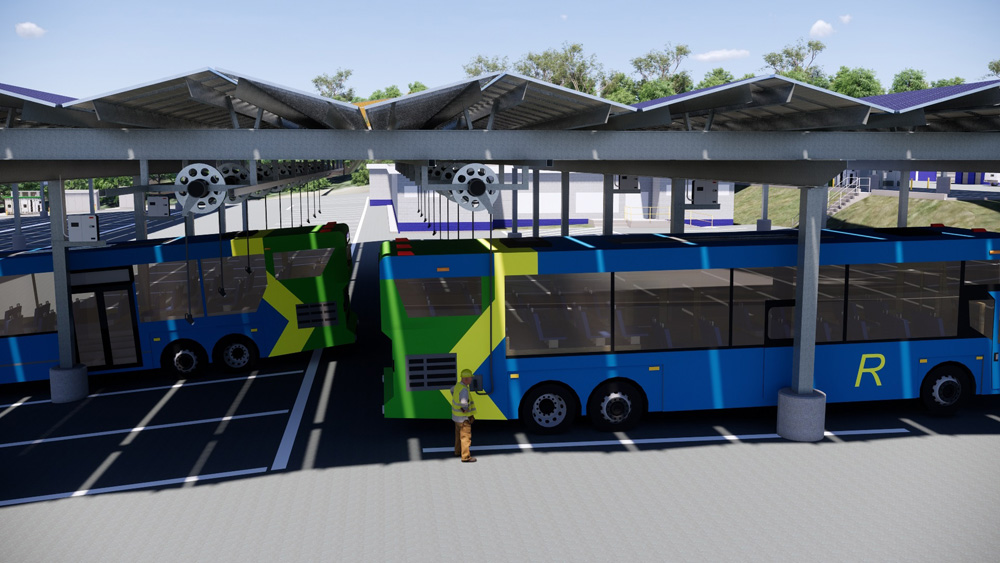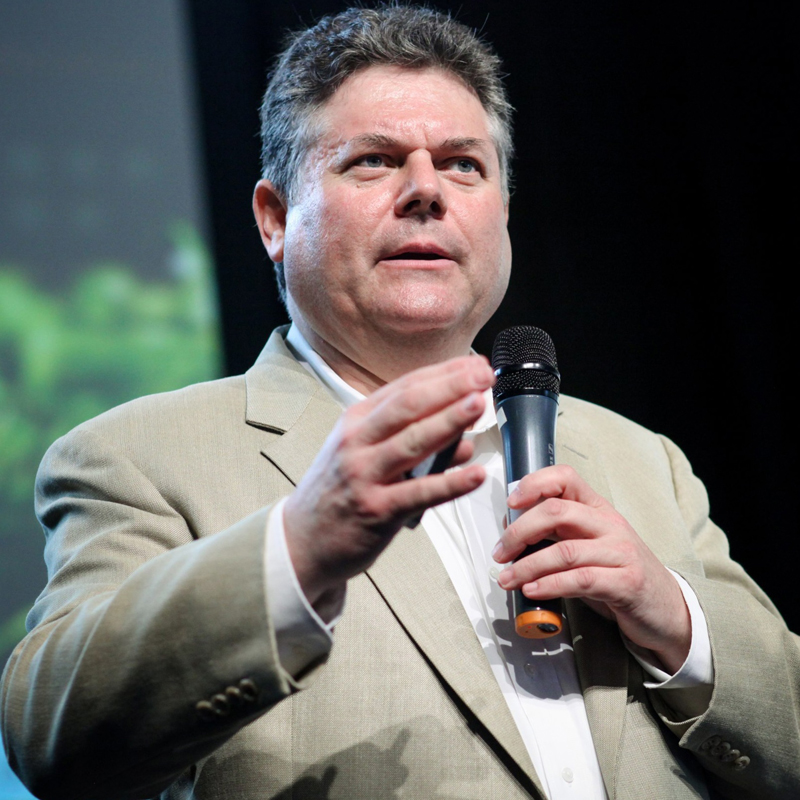
On 1 July, the US House approved a $715 billion infrastructure bill primarily focused on surface transportation. It contains $109bn for public transit systems and $100bn for rail, plus funds for electric vehicle (EV) charging stations and transit system electrification.

Shrinking the sector’s carbon footprint means building a robust federal government programme to get utilities to adopt cleantech innovations. In order to develop this initiative, the White House asked if the energy grid providing power to EVs and e-buses could run entirely on renewables. Biden’s team is betting big that it can. With its intense focus on transit, this administration considers public transit agencies a key clean-energy ally.
Converting large-scale transit fleets to EVs introduces a host of new challenges. Climate change is speeding increased deployment of renewable energy, just as governments and corporations declare new emission reduction goals. In response, a number of public transport agencies have decided to develop microgrids.
Opinions vary as to what constitutes a microgrid. A good general definition is a dedicated energy system that can be operated independently from the main grid. These typically include a distributed generation asset such as wind or solar, and likely a battery storage component. An advanced control system helps coordinate and manage the microgrid based on the outcomes for which it was designed.
Sam Houston of the Union of Concerned Scientists’ Clean Transportation Program suggests: “Day-to-day, a transit agency can operate the microgrid in tandem with the main grid to overcome distribution grid limitations around the fleet depot or manage demand charges related to the electricity the fleet uses from the main grid.”

Microgrids can be designed and built out in stages and can be flexible for future expansion while utility connections can be costly and slow to upgrade. In a power outage, or other emergency situation, the microgrid can operate independently - this is referred to as ‘islanding’: using distributed energy generation to charge transit vehicles so they continue to provide essential services. A microgrid may also allow a transit agency to provide non-transportation emergency services. For example, if transit vehicles are capable of power export, they could charge on the microgrid then drive to a school or shelter to provide emergency power, provided that they are not needed to transport people at such a time.
The number of transit microgrids is still small, but the pace of new projects coming online is quickening. A few of them are ploughing new ground.
Maryland: e-buses and decarbonisation
Maryland’s Montgomery County Department of Transportation (MCDoT) is deploying an advanced microgrid system incorporating solar canopies, battery energy storage, on-site dispatchable generation, and e-bus charging infrastructure. The project, called Brookville Smart Energy Bus Depot, is a partnership with AlphaStruxure (a joint venture owned by The Carlyle Group and Schneider Electric) and allows for uninterrupted bus services during long-term power outages, enhancing community resilience while also meeting decarbonisation goals.
MCDoT is being driven by a concern shared by other public transportation agencies: a service obligation to the residents of their communities to provide safe, effective and timely transportation. In 2021 they are being called upon to transition their fleets to zero-emission vehicles.

“Fleet charging infrastructure often needs to be purpose-built,” explains Nicole Geneau, AlphaStruxure’s SVP of development. “Local utility grids sometimes can’t support the new localised electricity demand. And to ensure their service obligations can always be met, transportation agencies must pay close attention to the availability, reliability and resilience of the supply of electrons upon which the fleet now depends.”
In order to meet overall decarbonisation goals, the electricity powering the electric buses must come from sustainable sources.
Brookville’s microgrid provides a holistic solution for these challenges. Incorporating “distributed energy resources” and microgrid technologies allows public transportation agencies to be in control of their own energy future through on-site sustainable energy generation.
The ability to operate independently embeds resilience into transit operations, Geneau points out: “Microgrids also provide operational flexibility to plan and dispatch fleets according to the needs of their riders, rather than the availability or cost of electricity from the grid at a particular time of day”.
Decarbonising public transportation will be critical to reach federal, state and local greenhouse gas (GHG) emissions reduction targets. Brookville’s microgrid is enabling MCDoT to transition large-scale fleets in a more cost-predictable, sustainable, resilient and reliable manner.

However, Geneau says that relying solely on the local utility to power a transit fleet comes with risks. “Extreme weather events, increasing bills, demand charges and ‘time-of-use’ tariffs can all have negative impacts on operations,” she explains.
Through the use of resilient and clean on-site energy generation, MCDoT’s microgrid secures the electricity supply and the infrastructure needed to charge the fleet. Because of its ability to operate in ‘island’ mode – not drawing power from the utility — a microgrid supports resilience and reliability of the fleet independent of what is happening with the utility. MCDoT’s microgrid keeps the fleet fully functional, even in the event of weeks-long power outages.
The transition to zero-emission fleets calls for transportation agencies to navigate a complex and evolving technology landscape and make critical long-term decisions about infrastructure. Geneau suggests that, while agencies may not always have the in-house technical resources to determine the ideal on-site energy or infrastructure solutions, they know better than anyone their service obligations—and the performance outcomes they’ll need from their energy infrastructure to support their fleet.
MCDoT needed AlphaStruxure as turnkey partner responsible for the design, construction, ownership, operation, maintenance and financing of its microgrid project. This model, often referred to as Energy as a Service (EaaS) is a type of public-private partnership, allowing an agency to pay for the infrastructure over time as an operating cost, instead of all upfront as a capital cost.

“EaaS provides an additional source of funding for EV infrastructure,” Geneau says. “Public transportation agencies often have a planned capital budget for the next 10 and 20 years already established. With regulatory deadlines for the transition to net-zero carbon operations growing nearer, partnering with the private sector to leverage expertise and private capital to tackle the challenge may be the only way to achieve those deadlines.”
MCDoT provides a terrific example of this in practice. The county has a goal of reaching net-zero carbon emissions by 2035. With the amount of technical, financial and contractual innovation that is required to electrify transportation fleets, years like 2035, 2040 or even 2050 are not too far off. Geneau thinks that these ambitious objectives can be met through EaaS, ensuring that this process is quick and relatively low-risk.
New Jersey: critical resiliency project
Elsewhere in the US, New Jersey’s mass transit agency, NJ Transit, has been awarded more than $409 million in federal funds for a new project: NJ TransitGrid. This is a partnership linking NJ Transit, the NJ Board of Public Utilities, the US federal Department of Energy, and the US Federal Transit Administration.
In the wake of Superstorm Sandy’s devastation in 2012, TransitGrid was initially envisioned as a primarily natural gas turbine-powered facility. However, NJ Transit and NJ Governor Phil Murphy are committed to a microgrid capable of employing, “to the greatest extent possible”, renewable generation and energy storage technologies “capable of providing highly reliable power to a core segment of NJ Transit and Amtrak’s critical service territory during extreme weather or outages in the commercial power grid.”
NJ Transit is the US’s largest statewide public transportation system providing more than 925,000 weekday trips on 251 bus routes, three light rail lines and 12 commuter rail lines. It is the third-largest transit system in the US, with 166 rail stations, 62 light rail stations and more than 18,000 bus stops linking major points in three states.

President/CEO Kevin Corbett says: “NJ TransitGrid is a critical resiliency project that ensures we can maintain limited, but vital, rail service for our customers in the event of local and regional power interruptions.”
The ability to maintain and enhance mobility and regional security in the event of power outages and emergency situations is attractive, as is minimising disruptions to the regional workforce and economy. Corbett believes the project will also provide additional sources of power by eliminating a single point of failure at existing interconnection points to reduce cascading impacts of service issues. It will also replace older, less efficient energy generation with newer, cleaner generation technologies, while ensuring NJ Transit is not subject to broader cybersecurity threats that could otherwise disrupt transit service. And the project creates employment opportunities in facility operations, maintenance, and ancillary services.
Massachusetts: reducing emissions
In Massachusetts, the Martha’s Vineyard Transit Authority (VTA) wanted “a more reliable, cleaner and quieter bus fleet” for its island. VTA says its programme creates the first “integrated, clean, resilient and flexible public transportation system” in the US. Electrifying VTA’s fleet means 300,000 miles is driven with electricity instead of fossil fuels. Once VTA is 100% electric, it reduces CO2 emissions by 36,000 tonnes over 10 years of driving 1.4 million miles annually.
To enable self-sufficient power supply, VTA decided it needed a microgrid - and for this it turned to VEIC, a US-based sustainable energy company with expertise in energy efficiency, building decarbonisation and transportation electrification. VEIC develops pilots and programmes that optimise energy use, reduce energy burdens for low-income customers and advance new technologies.
VEIC and VTA addressed some of the complexities associated with microgrid electric transit systems. They concluded that it’s vital to have a person in a role within a transit agency dedicated to managing a microgrid. In the set-up and ongoing management of the system there are many stakeholders to involve, at various stages, and having a champion to oversee all of the moving parts is essential to success. Also, microgrids are not always cost-effective - the expense will vary depending on available grants and incentives. Managing applications can be time-intensive, so it is important to identify key funding partners and to assign a person to oversee the process. When it comes to technology, it is changing quickly, particularly with microgrid hardware. Staying attuned to industry shifts is important in the early stages of developing a microgrid and selecting vendors. The process remains challenging: charging throughout a bus route is difficult. There are two options: overhead or inductive – and VTA opted for the latter, which is a plate the bus sits on at various stops along its route. Selecting charging equipment and developing schedules that allow for adequate charging of the fleet does come with some complexity.

So what to expect with future projects? Each transit microgrid project is different but, despite the challenges, Jennifer Wallace-Brodeur, VEIC director of clean transportation, insists: “The integration of a microgrid with an e-bus fleet can be an excellent solution for transit agencies looking to reduce GHG emissions and improve air quality while ensuring dependable, uninterrupted service.”
ABOUT THE AUTHOR
Gordon Feller is a freelance writer who has worked for four decades at the intersection of ITS and cities
What are the advantages of microgrids?
Sustainable energy company VEIC is working with Martha’s Vineyard Transit Authority (VTA) to integrate microgrids with electrified public transit, and sees several major advantages:
- Allowing public transit agencies to utilise renewable energy to power their electric bus fleet. Battery storage allows them to also optimise when they use renewable power, aligning with their fleet charging needs.
- Avoiding and managing grid load challenges. Opting to use stored power during peak demand events also can save transit agencies money by avoiding demand charges. In some areas electric utilities even offer incentives for assistance with demand response.
- Strengthening transit operations and provide increased electric system distribution efficiency. For instance, in VTA’s case, the microgrid is connected to the grid on the island.





